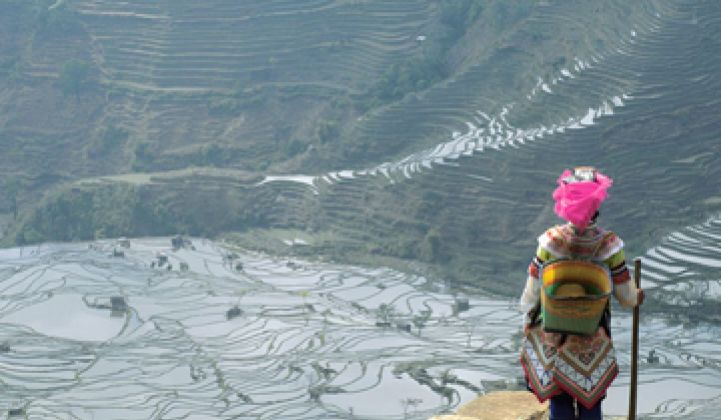“The golden age of water is rapidly coming to an end. The last century has conditioned us to think that water is naturally abundant, safe, and cheap -- that it should be, that it will be. We’re in for a rude shock.”[1]
-Charles Fishman, author
On July 28, the United Nations will recognize the one-year anniversary of its Resolution 64/292, the declaration that water is a human right. Dow Water & Process will mark the event by asking the question, “What is the value of water?”
Water sustains our way of life in more ways than one. We use it for energy generation, manufacturing, agriculture, and of course, drinking. Citizens of developed countries with relatively reliable water infrastructures are used to thinking of water as an endless resource. Yet millions of people around the world cope with chronic water shortages, or spend the majority of their waking hours locating and transporting enough water to stay alive. This great disparity in water access is the first clue that the human element is central to sustainable water policy.
Americans may have abundant access to water today, but we are by no means exempt from water risk. An October 2010 report by Tetra Tech for the Natural Resources Defense Council (NRDC) found that more than 1,100 U.S. counties face higher risk of water shortages by mid-century due to climate change, and more than 400 of these counties -- which encompass some of our largest cities -- will be at extremely high risk. The 2011 summer has barely begun, but lack of rain and record high temperatures have already prompted the city of Houston to enter Stage 1 water conservation mode.
The U.S. is not alone in its water problems. China’s economic miracle is threatened by severe water shortages, particularly in the heavily populated north. The PRC’s plan to divert six trillion gallons of river water annually across hundreds of miles is fraught with social, economic and environmental problems. Mismanagement of water resources can ripple outward from local watersheds to engulf whole villages, towns, cities and even countries.
To create equitable and sustainable water systems, decision-makers should treat water as a social good, assessing the real value of water in human terms. Developed nations can learn from solutions in the world’s poorest regions. For example, in Delhi’s Rangpuri Pahadi neighborhood, residents living on $3 a day successfully funded their own miniature well system, collecting money, building storage tanks and laying pipes to their homes.
“Those who want water pay about one day’s wages a month, and the residents are thrilled. Their 'upstart utility' gets them better water than the public standpipe, it comes on schedule, it liberates them to have jobs, and liberates their kids to go to school. They pay the equivalent, for a U.S. family, of $150 a month for water. And they did it themselves.”[2]
Water-challenged communities in the U.S. are improving community life and reaping important resource management benefits from assigning a value to water. Orange County, Florida has long been mandating the use of purified wastewater for landscaping in all new construction. The amount of wastewater cleaned and pumped back to residents is almost equal to the amount of potable water used in these applications, allowing the population to double without having to double the amount of potable water delivered. Similarly, by outlawing front lawns, paying residents $40,000 per acre to remove grass, and recycling 94 percent of all indoor water back to Lake Mead, Las Vegas, Nevada consumes as much water as it did ten years ago, even while its population grew by 50 percent during that time.[3]
Water resources and human usage patterns vary greatly from watershed to watershed. Thinking differently about water can help put our consumption of this precious resource on a more sustainable trajectory.
***
Snehal Desai serves as the Global Marketing Director for Dow Chemical Company’s Water and Process Solutions Business. The blog is based on a recent paper from him titled “Thinking Differently About Water Part II – The Value of Water.”
[1] Fishman, Charles, “What happens when we run out of water?” Salon, April 10, 2011. http://mobile.salon.com/mwt/feature/2011/04/10/the_big_thirst_excerpt/index.html
[2] Leonhardt, “’The Big Thirst’: The Future of Water.”
[3] Leonhardt, “’The Big Thirst’: The Future of Water.”



